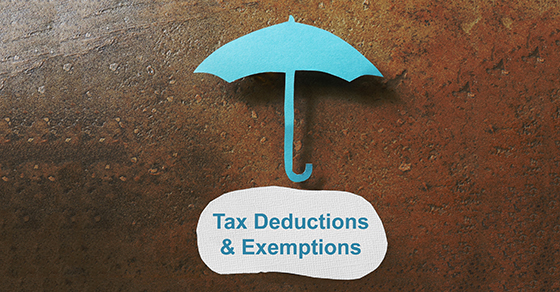Beware…of income-based tax limits

Many tax breaks are reduced or eliminated for higher-income taxpayers. Two of particular note are the itemized deduction reduction and the personal exemption phaseout.
Income thresholds
If your adjusted gross income (AGI) exceeds the applicable threshold, most of your itemized deductions will be reduced by 3% of the AGI amount that exceeds the threshold (not to exceed 80% of otherwise allowable deductions). For 2016, the thresholds are $259,400 (single), $285,350 (head of household), $311,300 (married filing jointly) and $155,650 (married filing separately). The limitation doesn’t apply to deductions for medical expenses, investment interest, or casualty, theft or wagering losses.
Exceeding the applicable AGI threshold also could cause your personal exemptions to be reduced or even eliminated. The personal exemption phase-out reduces exemptions by 2% for each $2,500 (or portion thereof) by which a taxpayer’s AGI exceeds the applicable threshold (2% for each $1,250 for married taxpayers filing separately).
The limits in action
These AGI-based limits can be very costly to high-income taxpayers. Consider this example:
Steve and Mary are married and have four dependent children. In 2016, they expect to have an AGI of $1 million and will be in the top tax bracket (39.6%). Without the AGI-based exemption phaseout, their $24,300 of personal exemptions ($4,050 × 6) would save them $9,623 in taxes ($24,300 × 39.6%). But because their personal exemptions are completely phased out, they’ll lose that tax benefit.
The AGI-based itemized deduction reduction can also be expensive. Steve and Mary could lose the benefit of as much as $20,661 [3% × ($1 million − $311,300)] of their itemized deductions that are subject to the reduction — at a tax cost as high as $8,182 ($20,661 × 39.6%).
These two AGI-based provisions combined could increase the couple’s tax by $17,805!
Year-end tips
If your AGI is close to the applicable threshold, AGI-reduction strategies — such as contributing to a retirement plan or Health Savings Account — may allow you to stay under it. If that’s not possible, consider the reduced tax benefit of the affected deductions before implementing strategies to accelerate deductible expenses into 2016. If you expect to be under the threshold in 2017, you may be better off deferring certain deductible expenses to next year.
For more details on these and other income-based limits, help assessing whether you’re likely to be affected by them or more tips for reducing their impact, please contact us.
© 2016 Thomson Reuters



 In addition to income tax, you must pay Social Security and Medicare taxes on earned income, such as salary and self-employment income. The 12.4% Social Security tax applies only up to the Social Security wage base of $118,500 for 2016.
In addition to income tax, you must pay Social Security and Medicare taxes on earned income, such as salary and self-employment income. The 12.4% Social Security tax applies only up to the Social Security wage base of $118,500 for 2016. 
 If you have incomplete or missing records and get audited by the IRS, your business will likely lose out on valuable
If you have incomplete or missing records and get audited by the IRS, your business will likely lose out on valuable 
 If you go on a business trip within the United States and tack on some vacation days, you can deduct some of your expenses. But exactly what can you write off?
If you go on a business trip within the United States and tack on some vacation days, you can deduct some of your expenses. But exactly what can you write off?
 Many businesses host a picnic for employees in the summer. It’s a fun activity for your staff and you may be able to take a larger deduction for the cost than you would on other meal and entertainment expenses.
Many businesses host a picnic for employees in the summer. It’s a fun activity for your staff and you may be able to take a larger deduction for the cost than you would on other meal and entertainment expenses.